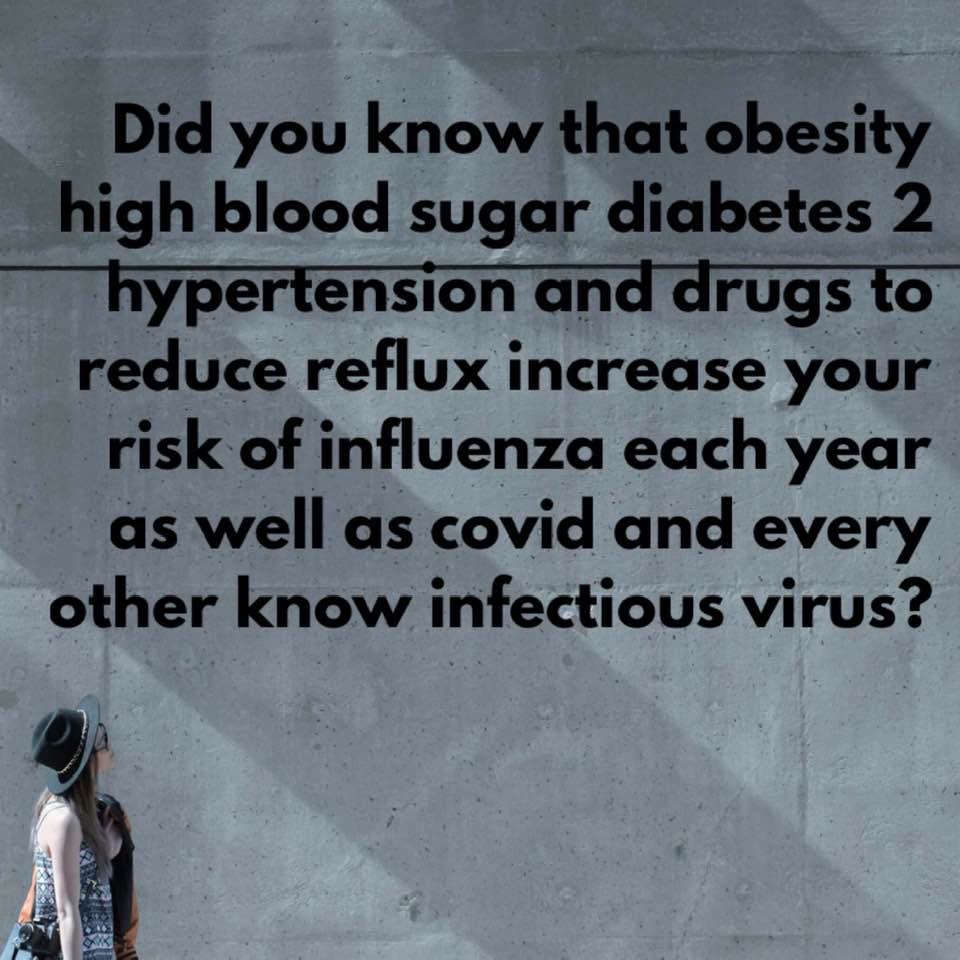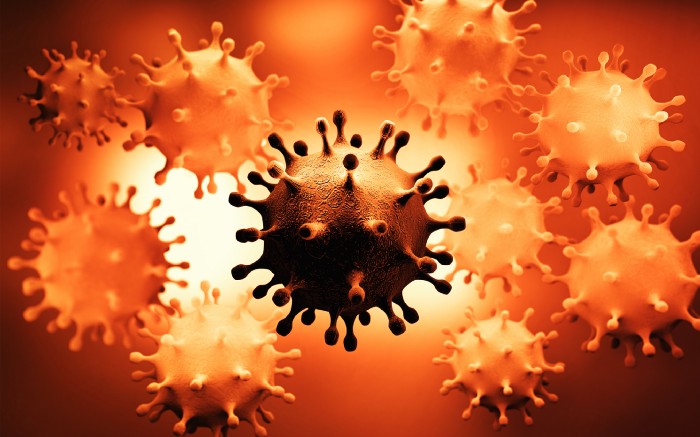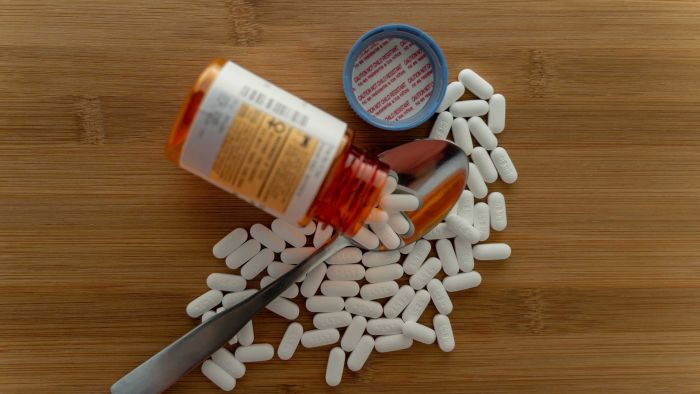Someone posted on Facebook and asked how to lost 35 pounds. I replied:
In four words:
Eat less, move more.
Forget fads and buzz words. Make your food intake conform to the three planks I have for my personal food intake and my products: Purity, Density, Diversity.
No sugar.
No wheat.
No GMOs.
As little refined or processed food as possible.
No empty calories, only nutrient dense food.
As wide a range of foods as your taste buds and body will tolerate, prefereably more than 50% of it raw.
After that, eat right for your body. Not your body type, your spirit, mind, body combination is unique, so discover for yourself what works best for you.
I would further add that I have over 100 weight loss tips in my book, How To Live The Healthiest Life avaialable from https://www.howtolivethehealthiestlife.com/
and I have received great feedback from consumers of https://www.healthelicious.com.au/Nutri-Blast-Weight-Loss-Blend.html
Re Hand Sanitisers
Dr Peter Dingle Writes:
If you live in Western Australia (a covid free state) and are concerned about the overuse of hand santiser you may want to send a copy of this to your school?
Dear (Principal)
I am concerned about the requirement for our children to use the school’s chemical hand sanitiser due to the multiple exposure and potential adverse health outcomes.
The hand sanitiser contains toxic chemicals and is a risk to our children’s health both short and long term.
We live in a Covid free state and, as such, this requirement appears an over reaction and totally unnecessary at this time. Can you please explain why it is required under the current circumstances?
Also, has the school conducted a Health Risk Assessment which looks at the potential total exposure to our children and potential adverse health outcome?
If so can we please be provided with a copy?
If so what is the upper level of application allowed for children and do you know how many times children apply these sanitisers to their hands in a 24 hour period?
Are you aware of the health risks to adults who apply these chemicals in medical settings which include an increased risk of asthma, allergies, skin conditions and gut dysbiosis?
Are you aware that children are not just smaller adults in terms of toxic chemical exposure but for numerous well documented reasons they are likely to be much more vulnerable than adults?
Are you aware of the large body of scientific evidence on the benefits of a healthy gut microbiome and the overuse of hand santiser seems to fly in the face of this science?
These are some of the questions that need to be addressed before you allow any child to increase their exposure to toxic chemicals.
Until a Health Risk Assessment is done or provided, we believe it is unnecessary and potentially harmful.
Again, we live in a Covid free state and such preventative measures are not necessary in the first instance.
I look forward to hearing from you.
Kind regards
Your Name
Courage

Virus Risks

From Dr Peter Dingle.
Lycopene as a Natural Antioxidant Used to Prevent Human Health Disorders

(Tom: Also in guava, watermelon and papaya.) Lycopene, belonging to the carotenoids is a compound abundantly found in tomato and tomato-based products. It is fundamentally recognized as a potent antioxidant and a non-pro-vitamin A carotenoid. Lycopene has been found to be efficient in ameliorating cancer insurgences, diabetes mellitus, cardiac complications, oxidative stress-mediated malfunctions, inflammatory events, skin and bone diseases, hepatic, neural and reproductive disorders. This review summarizes information regarding its sources and uses amongst different societies, its biochemistry aspects, and the potential utilization of lycopene and possible mechanisms involved in alleviating the abovementioned disorders. Furthermore, future directions with the possible use of this nutraceutical against lifestyle-related disorders are emphasized. Its protective effects against recommended doses of toxic agents and toxicity and safety are also discussed.
A Supercomputer Analyzed Covid-19 — and an Interesting New Theory Has Emerged

(Tom: This is one of the most important posts I have shared this year. So important that I am sharing the entire article in case it is “lost” online.)
Earlier this summer, the Summit supercomputer at Oak Ridge National Lab in Tennessee set about crunching data on more than 40,000 genes from 17,000 genetic samples in an effort to better understand Covid-19. Summit is the second-fastest computer in the world, but the process — which involved analyzing 2.5 billion genetic combinations — still took more than a week.
When Summit was done, researchers analyzed the results. It was, in the words of Dr. Daniel Jacobson, lead researcher and chief scientist for computational systems biology at Oak Ridge, a “eureka moment.” The computer had revealed a new theory about how Covid-19 impacts the body: the bradykinin hypothesis. The hypothesis provides a model that explains many aspects of Covid-19, including some of its most bizarre symptoms. It also suggests 10-plus potential treatments, many of which are already FDA approved. Jacobson’s group published their results in a paper in the journal eLife in early July.
According to the team’s findings, a Covid-19 infection generally begins when the virus enters the body through ACE2 receptors in the nose, (The receptors, which the virus is known to target, are abundant there.) The virus then proceeds through the body, entering cells in other places where ACE2 is also present: the intestines, kidneys, and heart. This likely accounts for at least some of the disease’s cardiac and GI symptoms.
But once Covid-19 has established itself in the body, things start to get really interesting. According to Jacobson’s group, the data Summit analyzed shows that Covid-19 isn’t content to simply infect cells that already express lots of ACE2 receptors. Instead, it actively hijacks the body’s own systems, tricking it into upregulating ACE2 receptors in places where they’re usually expressed at low or medium levels, including the lungs.
In this sense, Covid-19 is like a burglar who slips in your unlocked second-floor window and starts to ransack your house. Once inside, though, they don’t just take your stuff — they also throw open all your doors and windows so their accomplices can rush in and help pillage more efficiently.
The renin–angiotensin system (RAS) controls many aspects of the circulatory system, including the body’s levels of a chemical called bradykinin, which normally helps to regulate blood pressure. According to the team’s analysis, when the virus tweaks the RAS, it causes the body’s mechanisms for regulating bradykinin to go haywire. Bradykinin receptors are resensitized, and the body also stops effectively breaking down bradykinin. (ACE normally degrades bradykinin, but when the virus downregulates it, it can’t do this as effectively.)
The end result, the researchers say, is to release a bradykinin storm — a massive, runaway buildup of bradykinin in the body. According to the bradykinin hypothesis, it’s this storm that is ultimately responsible for many of Covid-19’s deadly effects. Jacobson’s team says in their paper that “the pathology of Covid-19 is likely the result of Bradykinin Storms rather than cytokine storms,” which had been previously identified in Covid-19 patients, but that “the two may be intricately linked.” Other papers had previously identified bradykinin storms as a possible cause of Covid-19’s pathologies.
As bradykinin builds up in the body, it dramatically increases vascular permeability. In short, it makes your blood vessels leaky. This aligns with recent clinical data, which increasingly views Covid-19 primarily as a vascular disease, rather than a respiratory one. But Covid-19 still has a massive effect on the lungs. As blood vessels start to leak due to a bradykinin storm, the researchers say, the lungs can fill with fluid. Immune cells also leak out into the lungs, Jacobson’s team found, causing inflammation.
And Covid-19 has another especially insidious trick. Through another pathway, the team’s data shows, it increases production of hyaluronic acid (HLA) in the lungs. HLA is often used in soaps and lotions for its ability to absorb more than 1,000 times its weight in fluid. When it combines with fluid leaking into the lungs, the results are disastrous: It forms a hydrogel, which can fill the lungs in some patients. According to Jacobson, once this happens, “it’s like trying to breathe through Jell-O.”
This may explain why ventilators have proven less effective in treating advanced Covid-19 than doctors originally expected, based on experiences with other viruses. “It reaches a point where regardless of how much oxygen you pump in, it doesn’t matter, because the alveoli in the lungs are filled with this hydrogel,” Jacobson says. “The lungs become like a water balloon.” Patients can suffocate even while receiving full breathing support.
The bradykinin hypothesis also extends to many of Covid-19’s effects on the heart. About one in five hospitalized Covid-19 patients have damage to their hearts, even if they never had cardiac issues before. Some of this is likely due to the virus infecting the heart directly through its ACE2 receptors. But the RAS also controls aspects of cardiac contractions and blood pressure. According to the researchers, bradykinin storms could create arrhythmias and low blood pressure, which are often seen in Covid-19 patients.
The bradykinin hypothesis also accounts for Covid-19’s neurological effects, which are some of the most surprising and concerning elements of the disease. These symptoms (which include dizziness, seizures, delirium, and stroke) are present in as many as half of hospitalized Covid-19 patients. According to Jacobson and his team, MRI studies in France revealed that many Covid-19 patients have evidence of leaky blood vessels in their brains.
Bradykinin — especially at high doses — can also lead to a breakdown of the blood-brain barrier. Under normal circumstances, this barrier acts as a filter between your brain and the rest of your circulatory system. It lets in the nutrients and small molecules that the brain needs to function, while keeping out toxins and pathogens and keeping the brain’s internal environment tightly regulated.
If bradykinin storms cause the blood-brain barrier to break down, this could allow harmful cells and compounds into the brain, leading to inflammation, potential brain damage, and many of the neurological symptoms Covid-19 patients experience. Jacobson told me, “It is a reasonable hypothesis that many of the neurological symptoms in Covid-19 could be due to an excess of bradykinin. It has been reported that bradykinin would indeed be likely to increase the permeability of the blood-brain barrier. In addition, similar neurological symptoms have been observed in other diseases that result from an excess of bradykinin.”
Increased bradykinin levels could also account for other common Covid-19 symptoms. ACE inhibitors — a class of drugs used to treat high blood pressure — have a similar effect on the RAS system as Covid-19, increasing bradykinin levels. In fact, Jacobson and his team note in their paper that “the virus… acts pharmacologically as an ACE inhibitor” — almost directly mirroring the actions of these drugs.
By acting like a natural ACE inhibitor, Covid-19 may be causing the same effects that hypertensive patients sometimes get when they take blood pressure–lowering drugs. ACE inhibitors are known to cause a dry cough and fatigue, two textbook symptoms of Covid-19. And they can potentially increase blood potassium levels, which has also been observed in Covid-19 patients. The similarities between ACE inhibitor side effects and Covid-19 symptoms strengthen the bradykinin hypothesis, the researchers say.
ACE inhibitors are also known to cause a loss of taste and smell. Jacobson stresses, though, that this symptom is more likely due to the virus “affecting the cells surrounding olfactory nerve cells” than the direct effects of bradykinin.
Though still an emerging theory, the bradykinin hypothesis explains several other of Covid-19’s seemingly bizarre symptoms. Jacobson and his team speculate that leaky vasculature caused by bradykinin storms could be responsible for “Covid toes,” a condition involving swollen, bruised toes that some Covid-19 patients experience. Bradykinin can also mess with the thyroid gland, which could produce the thyroid symptoms recently observed in some patients.
The bradykinin hypothesis could also explain some of the broader demographic patterns of the disease’s spread. The researchers note that some aspects of the RAS system are sex-linked, with proteins for several receptors (such as one called TMSB4X) located on the X chromosome. This means that “women… would have twice the levels of this protein than men,” a result borne out by the researchers’ data. In their paper, Jacobson’s team concludes that this “could explain the lower incidence of Covid-19 induced mortality in women.” A genetic quirk of the RAS could be giving women extra protection against the disease.
The bradykinin hypothesis provides a model that “contributes to a better understanding of Covid-19” and “adds novelty to the existing literature,” according to scientists Frank van de Veerdonk, Jos WM van der Meer, and Roger Little, who peer-reviewed the team’s paper. It predicts nearly all the disease’s symptoms, even ones (like bruises on the toes) that at first appear random, and further suggests new treatments for the disease.
As Jacobson and team point out, several drugs target aspects of the RAS and are already FDA approved to treat other conditions. They could arguably be applied to treating Covid-19 as well. Several, like danazol, stanozolol, and ecallantide, reduce bradykinin production and could potentially stop a deadly bradykinin storm. Others, like icatibant, reduce bradykinin signaling and could blunt its effects once it’s already in the body.
Interestingly, Jacobson’s team also suggests vitamin D as a potentially useful Covid-19 drug. The vitamin is involved in the RAS system and could prove helpful by reducing levels of another compound, known as REN. Again, this could stop potentially deadly bradykinin storms from forming. The researchers note that vitamin D has already been shown to help those with Covid-19. The vitamin is readily available over the counter, and around 20% of the population is deficient. If indeed the vitamin proves effective at reducing the severity of bradykinin storms, it could be an easy, relatively safe way to reduce the severity of the virus.
Other compounds could treat symptoms associated with bradykinin storms. Hymecromone, for example, could reduce hyaluronic acid levels, potentially stopping deadly hydrogels from forming in the lungs. And timbetasin could mimic the mechanism that the researchers believe protects women from more severe Covid-19 infections. All of these potential treatments are speculative, of course, and would need to be studied in a rigorous, controlled environment before their effectiveness could be determined and they could be used more broadly.
Covid-19 stands out for both the scale of its global impact and the apparent randomness of its many symptoms. Physicians have struggled to understand the disease and come up with a unified theory for how it works. Though as of yet unproven, the bradykinin hypothesis provides such a theory. And like all good hypotheses, it also provides specific, testable predictions — in this case, actual drugs that could provide relief to real patients.
The researchers are quick to point out that “the testing of any of these pharmaceutical interventions should be done in well-designed clinical trials.” As to the next step in the process, Jacobson is clear: “We have to get this message out.” His team’s finding won’t cure Covid-19. But if the treatments it points to pan out in the clinic, interventions guided by the bradykinin hypothesis could greatly reduce patients’ suffering — and potentially save lives.
Pharmaceuticals kill more Australians than illicit substances

Australia’s annual overdose report has found 2,070 people died from drug overdoses in 2018, with pharmaceuticals being implicated in most deaths.
The report found more than 1,500 of those deaths unintentional, and that opiates are the biggest killer.
There is some good news; the 2018 figures were lower than previous year. But John Ryan, the CEO of the Penington Institute, who wrote the report, says the five year trend is still up.
“I think the great tragedy of what we’ve found in this report is that more than 2,000 Australians have died from overdose in a single year,” he told Hack.
“It far outstrips the road toll and it’s a problem that I don’t think is getting the attention it deserves.”
https://www.abc.net.au/triplej/programs/hack/national-overdose-deaths/12607404
Flu Shot = More Acute COVID Infection
This extensively bibliographed article highlights the fact that a flu shot has the distinct potential of setting you up for a more severe reaction if you become infected with SARS-CoV-1.
A previous virus or vaccine (ie flu shot) may set up one’s immune system for a dangerous covid response.
“Facilitating antibody phenomenon is an ‘inadequate’ response to a new virus infection in which antibodies present against the virus will worsen the infection. These antibodies have been produced following a first infection (or vaccination) with a related virus (or more rarely with the same virus).
“…a recent (January 2020) article in the vaccine-industry-funded journal Vaccine, (Wolff GC, 2020) shows that prior vaccination against seasonal influenza may make people more susceptible to infection with coronaviruses…
“…Several studies show that influenza vaccination in children may lead to increased susceptibility to other viral respiratory infections…
“This phenomenon of non-specific facilitation should be studied to find its mechanism (which should not involve ADE because influenza viruses and coronaviruses are too far apart antigenically).”
https://www.aimsib.org/en/2020/08/23/covid-graves-admettre-lexistence-des-anticorps-facilitateurs/
Medical Technocracy

The Doctors for Disaster Preparedness1 lecture above, given August 16, 2020 in Las Vegas, Nevada, features Dr. Lee Merritt, an orthopedic spinal surgeon with a medical practice in Logan, Iowa.2
In her presentation, she discusses how geopolitical power can be swayed in the absence of an identifiable army or declared war. She talks about the cognitive dissonance we’re currently facing, when what we’re told no longer corresponds with known facts or logical thinking.
And she reviews how medical technocrats — the so-called medical experts and political leaders who have turned the world upside-down in response to COVID-19 — have been 100% wrong about everything they’ve been telling us.
They’ve been wrong about the initial risk assessment, testing, preventive measures, mask wearing and social distancing. They’ve conflated “cases” or positive tests with the actual illness. They’re also guilty of errors of omission — not telling us what medical doctors and scientists know to be helpful.
“I can give you the benefit of the doubt when you’re wrong about one or two things, but when you’re wrong 100% of the time, consistently, that is not by accident,” Merritt says. “They should have come up with something that was in our best interest if they really cared about us.”
The Rise of Technocracy
Merritt credits her understanding of technocracy to reading Patrick Wood’s book, “Technocracy Rising: The Trojan Horse of Global Transformation.” Wood is also the editor in chief of Technocracy News & Trends. I recently interviewed Wood. His interview is featured in “The Pressing Dangers of Technocracy.”
As explained by Wood and Merritt, technocracy is an economic ideology built around totalitarian rule by unelected leaders. It got its start in the 1930s during the height of the Great Depression, when scientists and engineers got together to solve the nation’s economic problems. At the time, it looked like capitalism and free enterprise were going to die, so they decided to invent a new economic system from scratch.
They called this system “technocracy.” The word comes from the word “techn,” which means “skill,” and the god “Kratos,” which is the divine personification of power. As explained by Merritt, a technocrat is someone who exercises power over you on the basis of their knowledge.
https://articles.mercola.com/sites/articles/archive/2020/09/05/medical-technocracy.aspx

Habits Of Happy People

